Alocasia Frydek (Alocasia Micholitziana ‘Maxkowskii’) is an astounding and breathtaking member of the Alocasia family that has gained popularity over the last few years due to its flawless soft velvety foliage. This striking plant is known as Green Velvet due to its gorgeous dark green velvety foliage. The stunning Alocasia Frydek exhibits elongated, pointy, arrow-shaped velvety leaves contrasting glaring white veining and wavy edges, making this plant a startling and attractive potted plant for homes or gardens. Frydek’s juvenile leaves emerge as bright lime-green, and the pale petioles exhibit a purplish jagged banding, adding even more intrigue to this eye-catching plant. It is commonly grown as an indoor plant but can thrive outdoors if provided with a specific climate and growing conditions.
Allied Species: Alocasia Macrorrhiza Variegata, Alocasia Sarian, Alocasia Pink Dragon, Alocasia Cucullata, Alocasia Silver Dragon, Alocasia Stingray, Alocasia Regal Shields, Alocasia Nebula, Alocasia Maharani, Alocasia Jacklyn, Alocasia Zebrina.
The Alocasia Frydek has compact growth, making it ideal for putting on tables, shelves, or windowsills. If you like velvety plants and need a plant to display in your Ikea greenhouse cabinet, this is a good one for you. But like other Alocasias, keeping the Frydek happy and thriving can be a bit tricky, but the fantastic foliage makes it worth it.
Essential Products
Habitat & Ecology
The stunning Alocasia Micholitziana ‘Maxkowskii’ plant is native to the tropical rainforests of Asia, more appropriately, the Philippines. However it is widely popular and sold by the name Alocasia Frydek which is actually its counterpart the rare variegated cultivar of Micholitziana specie. Due to its popular common name we will call Micholitziana ‘Maxkowskii’ as Alocasia Frydek in our guide. In recent years, Alocasia Frydek has become a highly sought after plant. They are a bit more of an intermediate plant, and I wouldn’t necessarily suggest this plant for beginners. Alocasias tend to be a little bit more finicky and quite particular about their conditions, so beware of that if you want one.
| Botanical Name: | Alocasia Micholitziana ‘Maxkowskii’ |
| Family Name: | Araceae |
| Common names: | Alocasia frydek, Green Velvet Alocasia |
| Origin | Asia -Specificly Philippines |
| Plant Size | 3 ft. (1 m) tall and leaves grow up to 18” (45 cm) long |
| Temperature | 60F-85F |
| Humidity | 50% and above |
| Light Need | Bright indirect sunlight |
| Soil Type | Well-draining, aerated |
| Plant Type | Tuberous or rhizomeous perennials |
| Flower Inflorescence | Insignificant Green and White inflorescence |
| Propagation | Corms, Basal Offset Division, stem or tuber cutting |
| Pest and diseases | Spider mites, Aphids, Scale |
| Diseases | Root rot, leaf spot diseases |
Alocasia Frydek Variegated
Alocasia Frydek variegated is also a cultivar of Alocasia Micholitziana specie and variegated counterpart of Green Velvet Alocasia. It is an impressive plant featuring long, velvety leaves and originating from the tropical climates of Southeast Asia. According to some plant lovers, it’s the most exotic Alocasia that is extremely rare.
This stunning plant has heart-shaped velvety leaves in rich dark green color with sectoral and splash patterns of variation, and white veining provides an attractive contrast. The Alocasia Frydek variegated is known by several names, including Alocasia Micholitziana Frydek, a specific botanical name for this specie of Alocasia.
Care of Alocasia Micholitziana ‘Maxkowskii’
Alocasia Frydek thrives in bright indirect sunlight, in a moist but well-draining potting mix. The plant should be provided with enough moisture; like all other aroids, it loves to stay moist. Maintain a constistent temperatures between 65°F and 85°F (18°C – 29°C) and fertilize monthly during the growing season. Additionally, this plant thrives well in high humidity and can suffer in a dry environment. Frydek’s leaves need plenty of indirect sunlight to to grow large leaves and to keep their vibrant green and white colors.
This stunning Alocasia is known for its demanding nature; however, it can thrive in the right growing conditions; therefore, plant parents should keep it in a particular climate to grow. Let’s look in details all the care aspects to grow Alocasia Frydek indoors successfully to add a tropical vibe to your home.

Growth
In optimal conditions such as warm, humid, bright light, Alocasia Micholitziana ‘Frydek’ is a fast-growing evergreen perennial. It tends to produce new leaves every few weeks but like other Alocsias, Green Velvet Alocasia tends to drop off older leaves to replace with new growth. At one time the main tuber or Rhizome of Frydek may have four or five leaves. Alocasia Frydek puts out more offsets and pups as they grown which can make the plant bushier and fill the pot.
The Alocasia Frydek grows faster in bright light, reaching a height of 3 ft. (1 m) tall. The elongated, arrow leaves sit on the petioles growing from a rhizome or tuber. The pointy, velvety leaves can grow up to 18” (45 cm) long.
Alocasia Frydek can also be grown outdoors as a tender perennial in sheltered spots where it can receive morning or evening sunlight. Being a tropical plant, it thrives in USDA zones 10 through 12. Green Velvet Alocasia goes dormant in cooler temperatures or if the plant is stressed, turning leaves yellow and drop off. In winter, there is no new growth on this plant, therefore cut back to watering.
Flowering
Alocasia Frydek occasionally grows inflorescences- green spadix emerging from the center of the plant but the Frydek’s flowers are relatively inconspicuous compared to the stunning foliage.

Watering
When it comes to watering, Alocasia Frydek is very tricky to handle. It has thick water-storing stems giving them succulent-like properties but it’s also intolerant to drought and doesn’t like overwatering. This plant is happy in slightly moist soil. However, when the top 1 to 2 inches of soil is dry, it’s time to water the plant. In bright light conditions they can be very thirsty plants and may need to water daily if grown outside. However it doesn’t want to be in compact or soggy potting mix.
Overwatering leads to root rot which is deadly for this plant; similarly, underwatering may cause leaves to drop and browning of leave edges; therefore, be very careful with the watering. This plant doesn’t need a strict watering schedule; water it only when it needs it. Similarly, Frydek is not tolerant to drought and may go dormant, dropping off the leaves.
During winters, the Alocasia Frydek enters dormancy which decreases its watering needs, the soil remains wet for a more extended period, and the plant’s growth also slows down in the cold season. You might need to cut down the watering frequency due to the decreased light levels and the longer nights, resulting in your plant not photosynthesizing as much as in the warmer months. On the other hand, in the growing season, this plant needs more water as plant is active and growing new foliage.
Tips to Prevent Overwatering
As the Alocasia Frydek is tricky to handle and sensitive to over and under-watering, the following tips will prevent it from problems.

Light Need
Like all other Alocasias, the Frydek is sensitive to light intensity and does better in indirect bright sunlight. Provided the adequate indirect light encourages its growth. Conversely, exposing the plant to direct sunlight may burn or scorch the foliage.
Place it in a location at home where it receives bright but indirect light, and partial shade does well for Frydek outdoors. However, this plant craves for light, it would help plant grow larger leaves if exposed early morning low intensity sun rays. However, the foliage is sensitive to intense direct light, even one to two hours of direct exposure to light will burn its velvety leaves. Also, in insufficient sunlight, the plant grows slowly and takes a long time to develop new leaves, and in low light, it is also prone to overwatering.
Where to Place Alocasia Frydek?
Frydek appreciates several hours of bright, indirect sunlight, preferably from a north- or east-facing window. You can put your Frydek directly in front of the window to maximize the light it receives. The size of the leaves of this Alocasia highly depends the amount of light it receives. For west or south-facing windows, keep the your plant few feet away from the window to avoid foliage burn.
Please remember to face the leaves towards the window to let leaves absorb maximum amount of light. Plant rotation from time to time is significant, as it craves sunlight, and when it doesn’t receive adequate light, the petioles stretch out to find sunlight which means the plant start leaning towards the light source.
If you don’t have bright spots, installing the grow light help getting the required light. Please make sure the plant receives six to eight hours of bright light.
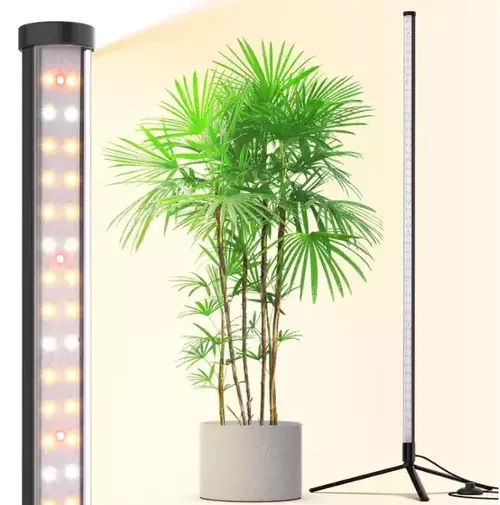

Humidity and Temperature
Alocasia Frydek hails from a tropical climate and appreciates a warm and humid environment. Therefore, the desired humidity levels benefit the plant’s growth greatly. The ideal humidity levels for Frydek are 50% and above. In the absence of required humidity, the leaves’ edges and tips start turning brown. Consider placing this plant in your Ikea greenhouse cabinet or using a humidifier near the plant to attain the desired levels.

Moreover, to elevate the humidity, you can place your plant on a pebble tray filled with water or place a tray with water near your plants. When ypu place the pot on a pebble tray, keep the water low to keep the soil dry; otherwise, the soil will soak up the water from the drainage holes.
Another effective method is grouping your plants to increase the humidity due to transpiration. But avoid crowding your plants because they need airflow; else may suffer from fungal leaf spots or pest infestation spread
Temperature
Because of its habitat, the plant loves warm conditions. Unfortunately, this plant isn’t cold resistant and may struggle under 50 degrees Fahrenheit and become dormant. The ideal temperature required for Frydek is 65°F and 85°F (18°C – 29°C). The plant is also susceptible to hot and cold drafts and causes many problems, such as yellowing or drooping leaves. Green Velvet Alocasia’s growth stops in temperatures below 60°F (15°C). Therefore , bring your plant indoors when the temperature drops below 60°F or 16°C.
For the healthy growth of this plant, avoid sudden temperature changes, including cold and hot drafts. Moreover, Frydek plants are intolerant to frost, so bring your plant indoors during winter.

Soil Need of Green Velvet Alocasia
Well-draining soil is a must for Alocasia Frydek; however, able to retain a little moisture to keep the soil lightly moist all the time. A surefire way to impede root rotting is that your plant is in a chunky, airy potting mix because soil that is too heavy or dense may retain too much water, leading to rot. Chunky components such as perlite, pumice, and bark allow for really good drainage and aeration of the roots. Although Green Velvet like to stay quite moist, they don’t want it to be super compact in heavy soil.
Being rainforest dwellers, Green Velvet Alocasias grow in humus-rich soil; hence are heavy feeders. They thrive in organic-rich soil as their nutrient requirements are higher than many other houseplants. The nutrients help the plant grow large foliage, and drainage prevents the Frydek from root rot and other fungal diseases.
Note: The organic material will decay over time and eventually causes soil compaction leading to moldy soil, which retains water and suffocates the plant’s roots. Remember that the lighter your soil, the faster it will dry out.
We recommend a potting mix with some amendments by adding some inorganic components such as perlite, pumice, and charcoal in your potting mix to keep the medium light and airy.
Potting Mix Recipe
I usually prepare an organic-rich chunky potting mix for my Alocasia Frydek by adding the following ingredients;
However, if you don’t want the hassle and prefer a ready-made potting mix, we highly recommend checking the following potting mixes;
Growing In Semi-Hydroponics
Many plant parents like to grow their jewel Alocasias in semi-hydroponics such as LECA as they don’t have to deal with all the soil mess. My Alocasia Frydek didn’t seem to enjoy LECA, unlike Alocasia Zebrina, which adjusted immediately as soon as I potted that LECA. Green Velvet Alocasia somehow took a long time to shoot new growth, and meanwhile, leaves started yellowing, and a few roots suffered root rot. So be patient with your Frydek, and it will push back.
For LECA medium, I would suggest using a clear glass vase or jar to monitor root growth and catch up on any root rot in time. Moreover, please don’t use a very large or deep vase or jar, as it will not let LECA dry out, and you don’t want your plant to be consistently wet. Plants potted in LECA do better in small jars and are less susceptible to root rot.
Steps to grow your Alocasia Frydek in LECA
Related Products
Products | Name | Check Price |
Organic Perlite for Plants | ||
WONDER SOIL Organic | ||
Orchid Potting Bark Mulch |

Potting & Repotting
Alocasia Frydek likes to a bit rootbound and does well in relatively small pots. Though this plant has vigorous root growth and can grow up to several feet, it doesn’t require repotting quite often.
Don’t report it until it starts showing the signs of root bound. The signs include roots peeking through the drainage holes, the soil quickly dries after watering, and slow growth despite good care.
When you decide to transplant the Frydek, do it in the growing season; also, choose a pot one size larger than the current one. Watering the plant before repotting is a good practice and makes the process easier. Inspect the roots for any problems or diseases and remove the infected areas.
How to Repot?
Follow these steps for transplanting the Zebra plant.

Propagation of Green Velvet Alocasia
Like all Alocasias, Green Velvet Alocasias can be propagated in various ways, such as through the tuber or (stump) stem cutting, Basel offset division and corm method. However, propagation should be done in the spring or early summer for a better success rate as the plant is active.
Propagation by Tuber Cuts
The Alocasia Frydek is a tuberous or rhizomatous plant that produces clumps with three or four petioles from a stump that grows upward.For mature Alocasias, you might see the stump grown out of the soil and has lines or circles where you find nodes or growing eyes. The new buds shoot from those nodes. The older the plant longer the main stem or stump.
However, longer stump Alocasias are difficult to repot; sometimes, the lower end may rot and turn mush. When using the stump or tuber cutting method, scrutinize the tuber for possible rot, trim, and throw away the infected part.
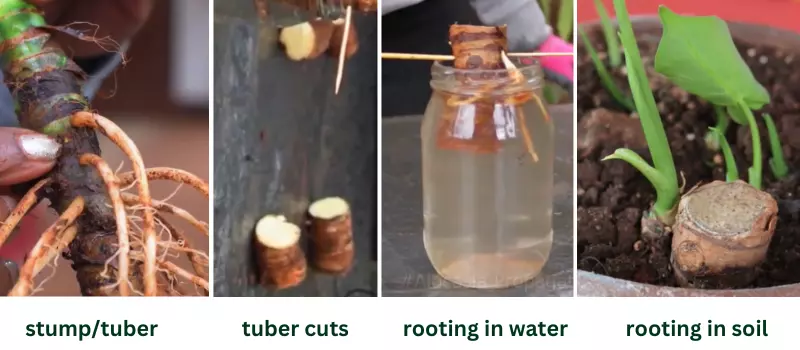
Step-by-step guide
Corm Propagation
Alocasias grow corms in their roots which roll around in the potting mix. Basically, they are grown by your plant because it propagates itself in the soil, which you can harvest and grow into an independent plant.
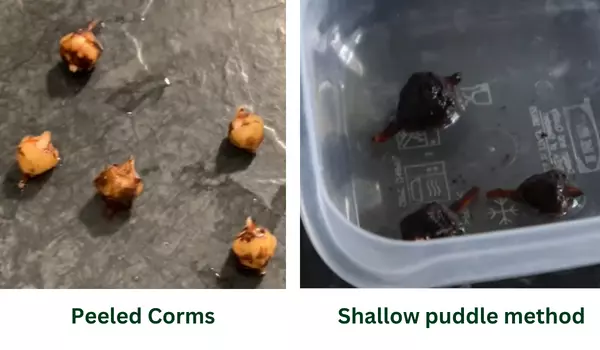
Follow the steps below to propagate the plant through corms;
Propagation By Division
The division is the most common and successful propagation method for Green Velvet plants. Alocasia Frydek grows in clumps with three to five leaves and petioles fanning out from one main stump.
If you look closely, you might find two or three clumps in the Frydek pot meaning multiple plants in a pot. You can actually separate these clumps and grow them in separate pots. Gently untangle the roots; if the individual plants’ roots are too entangled, carefully cut them apart with a sterilized knife or scissors. Plant the separated Frydek plants in a well-draining potting mix. The separated plants will put out more leaves and pups as they grow.
Propagating Basal Offsets
Alocasia Frydek grow basal offsets or suckers (also called a pup) naturally and asexually produced on the mother plant. It grows from the main plant and runs horizontally, absorbing nutrients from the mother plant. Please wait for the plantlet’s base to swell slightly before dividing it with a knife. As it grows, it sprouts a few leaves above and adventitious roots below its tips. You can separate the offset once it has a good root system and surpasses 25cm in height.
Gently pull the plant out of its pot and brush off the soil for better access. Place your fingers close to the nodal junction. Slowly wiggle away the offset stem and push the chosen offset downwards until you hear a snap.
The offset usually has small developing roots that may entangle the mother plant roots. Gently pull the plantlet roots and separate the offset from the mother plant. Either transplant the offset in soil, sphagnum moss or water, depending on the size and health of its root.

Fertilizer
Alocasia Frydek is a heavy feeder, and it’s a good idea to fertilize it regularly, especially in the growing season. Recommended fertilizers for this plant are ½-dilution of a balanced liquid fertilizer or natural fertilizers rich in nutrients such as worm castings. Always water your plant before fertilizing it to avoid root burn. To encourage the foliage growth, you can also feed a high nitrogen based fertilizer) NPK- 10-4-3) to your indoor plants.
Some plant parents prefer granular slow-release fertilizer once a month. It releases nutrients slowly when the plant is watered and lessen the chances of foliage or root damage. During the spring and summer seasons, apply fertilizers once a month for active growth and stop fertilizing it in the winter and fall months as the plant’s growth stops and it doesn’t need to be fertilized.
We recommend fertilizing this plant probably a little bit more than my regular houseplants because Alocasias are quite robust growers. They’re rhizomatous so they put out rhizomes down below and they do put out a lot of offsets and pups .So if you notice these offsets it is time to increase the fertilizing just a little bit.
Unwanted salt residues can build up over time due to fertilization. Don’t forget to flush out excessive fertilizer every few months by flushing your plant’s soil thoroughly and letting the water drain out completely. The water drenching method keeps the soil healthy and rich. Moreover, the organic fertilizers are gentle, safe, and help increase the soil’s microbial health. It is beneficial to feed organic nutrients such as fish emulsion, worm castings, or compost prevents root burn from a buildup of mineral salts.

Maintenance and Pruning
The Alocasia Frydek doesn’t need pruning quite often. When the plant matures and grows new leaves, the older leaves at the lower ends tend to turn yellow and drop off. However, you can prune old leaves to keep your lovely plant in shape and attractive.
Remember, Frydek Plant will not become bushier by frequent pruning. It can have 4 to 5 leaves at one time. As the Green Velvet Alocasia plant has a few leaves, one might not want to prune the leaves unless necessary and the plant recurrently sheds old leaves and grows new. When pruning dead or dying foliage, cut the leaf petiole near the soil line.

Toxicity
Like all other Alocasias, the Frydek is toxic to humans and pets because of calcium oxalate crystals. If ingested, it can cause swelling and pain to the mouth, throat, tongue, and digestive tract. Keep it out of reach of pets and children. In case of consumption, immediately seek medical assistance.
Frydek can also cause skin irritation if touched; therefore, use gloves when handling this plant.

Pests, diseases & common problems
Pests
Alocasia Frydek is extremely pest prone and is susceptible to several pests, including spider mites, mealy bugs, scales, and thrips. Inspect your plant regularly for any signs of pests. Alocasia Green Velvet plants are spider mites magnets and can get bite marks on the foliage and cause the plant to decline a lot.
The common signs of pests’ infestation in Alocasia Frydek are yellow, twisted, or curled leaves, stunted growth, and molds on the leaves. If you notice spider mites, evaluate the humidity levels as they thrive in dry conditions. Adjust the humidity accordingly and rinse the leaves and stems with plain water to remove the mites.
You can also spray the affected foligae with a mixture of alcohol and water to remove and kill the spider mites. Take 1 cup of alcohol and add 30 Oz of water and pour this solution in the spray bottle. Shake it well and thoroughly spray the plant with this mixture. Let it stay for 30 to 40 minutes and then rise the leaves . Continue spraying every 3 to 4 days until pests are eliminated.
Diseases
This delicate plant is most vulnerable to various diseases, mainly root rot and tuber rot. The root rot is caused by overwatering , poor pot drainage and too dense potting mix. It’s a dangerous condition that can be deadly for your plant. The common signs of root rot are the yellowing of leaves and mushy roots. Moreover, avoid burying the tuber part where the petioles emerge in the soil to avoid rot due to water logging.
If your plant’s leaves are turning yellow and you suspect root rot, remove the plant from the pot and inspect its roots. In case of mushy roots, remove the infected parts and report in fresh well-draining potting soil. Also, ensure the pot has draining holes to drain out excess water.
Common Problems
There are many problems that a plant owner can encounter; we have covered some common issues below.
Yellow leaves
The yellow leaves issue can be caused by overwatering. Make sure the pot has drainage holes and that potting soil should be aerated and well-draining. Also, ensure that excess water drains out thoroughly after watering.
Wilting leaves
The leaves’ wilting may be caused by underwatering or insufficient sunlight. If you notice leaves drooping in your Alocasia Frydek, consider moving it to a brighter location, where it gets proper light, and also give it a drink to tackle the issue.
Brown leaves
If your Frydek develops brown leaves tips and edges, it’s a sign of lack of humidity, underwatering, or both. On the appearance of these symptoms, check for the humidity levels and watering frequency and adjust accordingly.
Dropping leaves
Sudden environmental changes may cause your Alocasia to drop leaves, a common condition in the fall and winter months. As the plant enters dormancy in these months, it may lose all its leaves and grow them back in spring. But you should be concerned when the plant drops leaves in the summer and spring. Look for the possible causes and evaluate the changes in surroundings, such as changes in temperature, humidity, light, and water. Finding the reasons and treating your plant accordingly will bring it back to life only if its bulb is firm and alive.
Molds on the soil
The molds on the surface of the potting soil could be caused by two reasons, low light, and overwatering. To contest this issue, replace the top 2 inches of soil and move your plant to a brighter location so that your plant can photosynthesize effectively and the roots can absorb all the water. Moreover, adding chunky components such as orchid bark or pumice will help to avoid compact soil.
Fungal spots
The velvety leaves of Alocasias doesn’t appreciate frequent misting as it may cause leaf diseases. If your plant is in a crowded spot and doesn’t have adequate air circulation it may cause fungal spots on the leaves. Stop misting your plant and place it in a place with enough air flow and high humidity.

Frequently Asked Questions
Is Alocasia Frydek difficult?
Alocasia Frydek, also known as green velvet Alocasia, is a rare and stunning Alocasia variety. It’s a high-maintenance plant, and keeping it healthy and happy is challenging.
Is Alocasia Frydek variegated rare?
Alocasia Frydek variegated is a beautiful houseplant with dark green variegation, and heart-shaped narrow leaves is a rare variety of Alocasia, which has gained popularity in recent years.
Should I mist Alocasia Frydek?
Alocasia Frydek, aka Green Velvet Alocasia, loves high humid conditions and thrives well in 50% and above humidity. To maintain desired humidity levels, mist your plant or place a humidifier nearby. When misting your plant make sure your plant is a spot with ample air flow to dries the misting water from the leaves to avoid fungal leaf spots.
Is Alocasia Frydek fast-growing?
If provided with the optimal growing conditions, your lovely Alocasia can grow fast and reach up to 2 to 3 feet tall. Being said that, it is a moderate to fast grower in ideal conditions.
How big does Alocasia Green Velvet grow?
In the ideal environment, the Alocasia Green Velvet can grow up to 2 to 3 feet tall, and the heart-shaped leaves can grow up to a foot.
Is Alocasia Frydek and Green Velvet the same?
Alocasia Frydek (Alocasia Micholitziana Frydek) is a variety of elephant ear plants, also known as Green Velvet Alocasia due to its dark green velvety leaves.

Final Words
The Alocasia Frydek, commonly known as green velvet Alocasia because of its dark green velvety and soft leaves, is an extremely rare and elegant houseplant.
Alocasia Frydek should be your go-to plant because of its striking deep green foliage and white veining if you want an exotic plant for your home. Of course, it’s a high-maintenance plant and thus needs more care and attention to thrive, but it’s all worth it considering the gorgeousness of this tropical resident.
This Alocasia is a bit finicky and unsuitable for beginner growers, but it can be a great tallying to your plant assortment. If you are a plant enthusiast, it’s a must-have plant for your collection.
We hope you have liked this care guide about Green Velvet Alocasia and will help you grow your Frydek successfuly.
Related Posts
Alocasia Cuprea (Mirror Plant ) | Red Secret Alocasia
The Alocasia Cuprea is a well-loved and breathtaking member of the spectacular Jewel Alocasias- a collection of dwarf Alocasias ideal as ornamental plants for table tops and small indoor spaces. The intriguing glossy and thick oval foliage with a copper-metallic sheen of Alocasia Cuprea makes it…
Alocasia Jacklyn Care and Propagation Guide
Alocasias have many gorgeous, ornamental indoor plants, but Alocasia Jacklyn is the most beautiful large-leafed tuberous plant with profoundly lobed and arrow-shaped foliage. This striking beauty will light your environment with its vibrant green leaves and contrasting blackish-green veins. This…
Alocasia Maharani (Gray Dragon) – A Hybrid Alocasia
Hello amazing plant parents! Today, we will discuss everything about a remarkable hybrid Alocasia Maharani. There are many exquisite Alocasia hybrid plants, but Alocasia Maharani is unique. This beautiful creation is known by many names, such as Grey Dragon. The…
Alocasia Polly- African Mask Plant Care Tips
Greetings, Gardening Family… Are you looking for a beautiful and eye-catching indoor plant for your home? I must say you cannot go wrong with the Alocasia Genus, especially with its beautiful cultivar plant Alocasia Polly. It has all its parent…
Alocasia Regal Shield Growing & Care Guide
Greetings, Gardening Family… The Alocasia Regal Shield is the pre-eminent plant to grow indoors and outdoors. The heart-shaped leaves have a velvety texture and grow up to 8-20 inches in size. A slender and erect herbaceous stem supports these large…

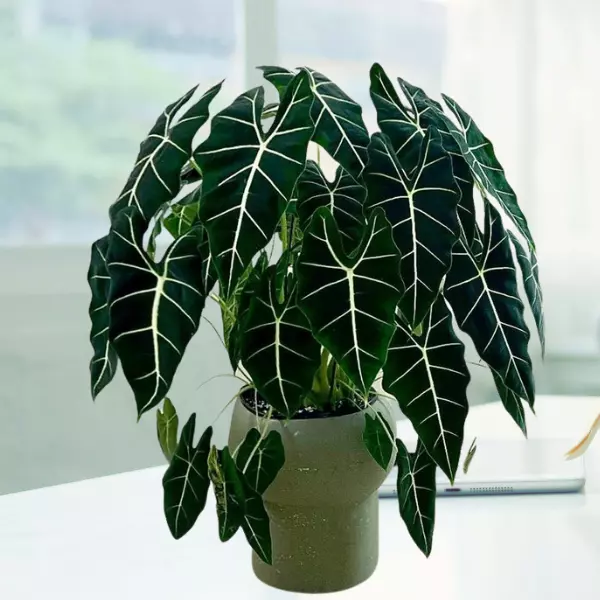

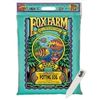
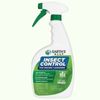

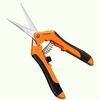


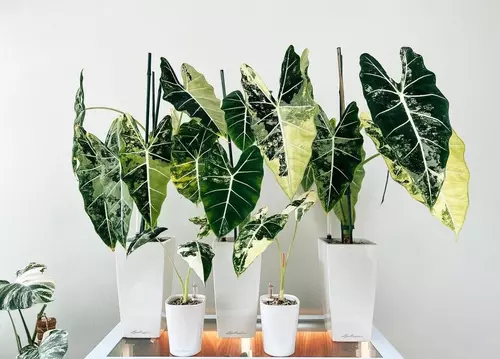
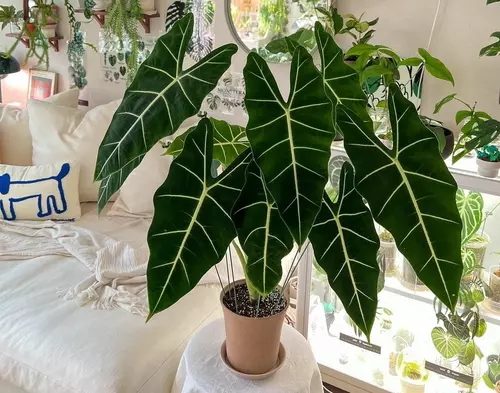
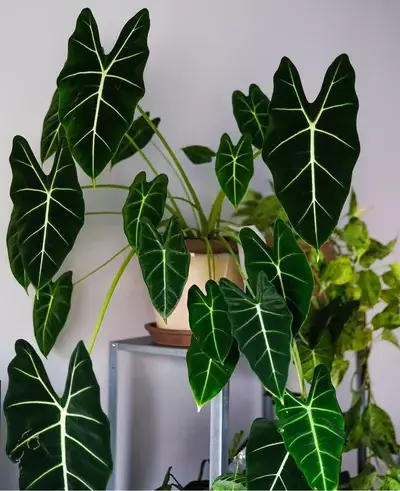
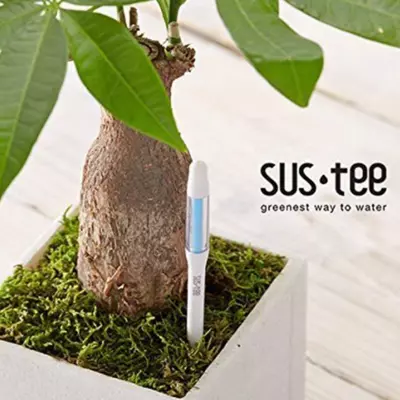
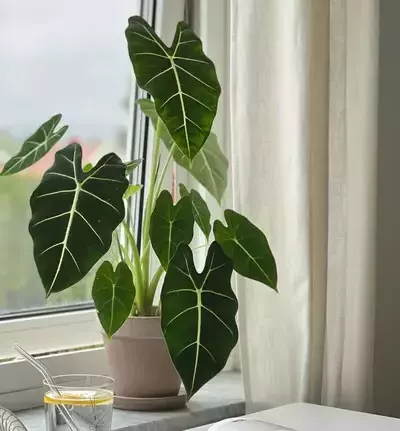
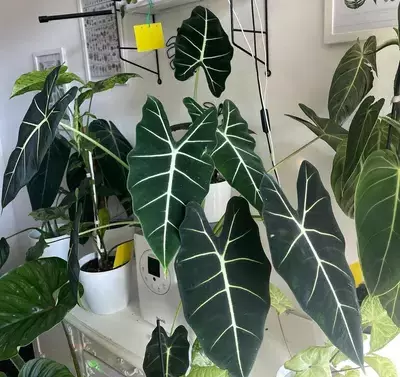





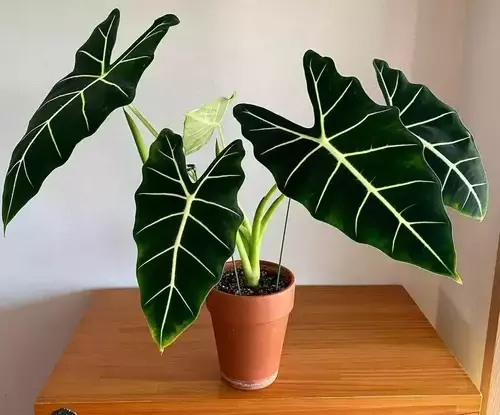
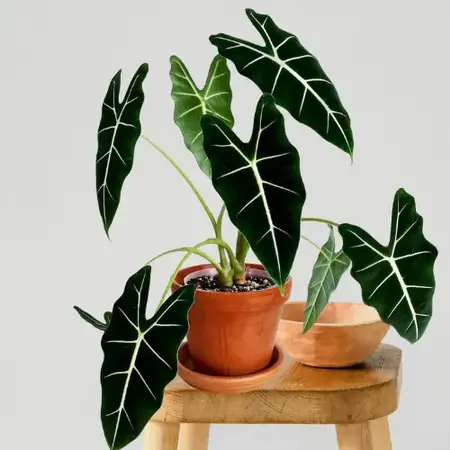
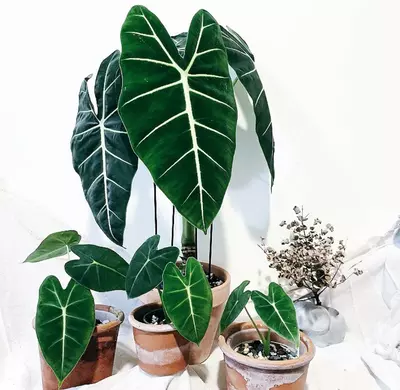
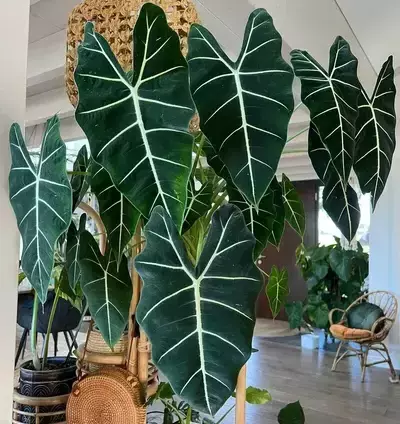
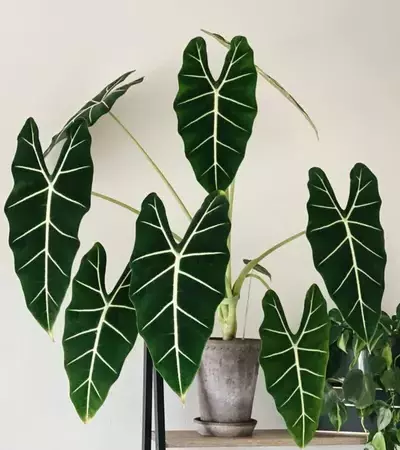

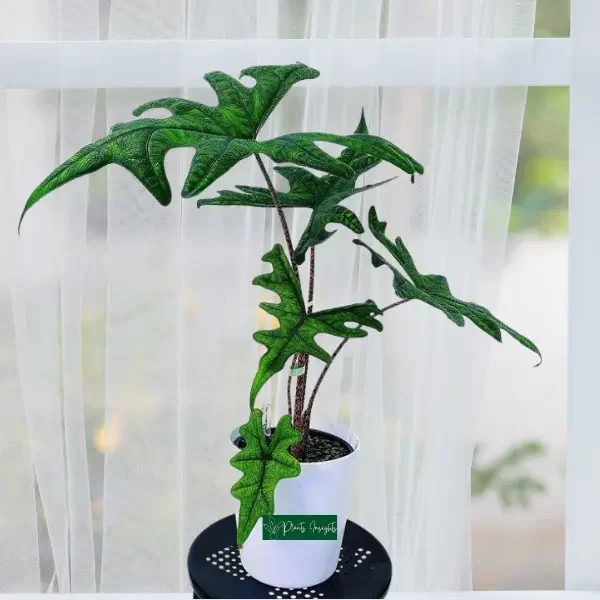



Some genuinely good info , Glad I noticed this.